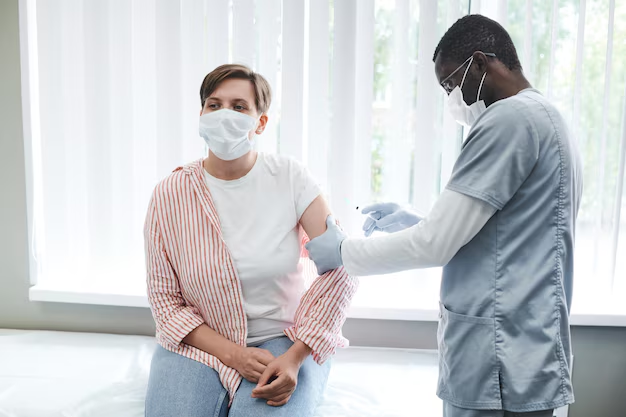Understanding Tuberculosis Vaccination: What You Need to Know
Every time you breathe, your body is potentially exposed to a host of bacteria, some harmless, some deadly. One particularly formidable adversary is tuberculosis (TB), an infectious disease primarily affecting the lungs but capable of targeting other parts of the body. With such a legacy of fear and confusion surrounding tuberculosis, many find themselves asking, "Is there a vaccination for TB?" The answer is both straightforward and complex, encapsulating historical, medical, and social dimensions.
The Bacillus Calmette-Guérin (BCG) Vaccine: An Overview
What is the BCG Vaccine?
The primary vaccine for tuberculosis is called the Bacillus Calmette-Guérin (BCG) vaccine. Developed in the early 20th century, BCG has been utilized worldwide in efforts to curb the spread of TB. While it does not offer full-proof protection against the disease, BCG is particularly effective against severe forms of tuberculosis, such as TB meningitis in children.
How the BCG Vaccine Works
The BCG vaccine is derived from a strain of Mycobacterium bovis, which is closely related to the causative agent of TB, Mycobacterium tuberculosis. This living, but weakened, bacteria stimulates the immune system to recognize and fight off the more dangerous tuberculosis bacterium if encountered in the future.
Efficacy and Coverage
A question often posed is about the efficacy of the BCG vaccine. Studies indicate variability, with efficacy ranging from 0% to 80%. This wide range is due, in part, to geographical differences in TB strains and environmental mycobacteria. Despite this variability, BCG remains the only licensed TB vaccine and is particularly emphasized in regions with high TB prevalence.
Who Receives the BCG Vaccine?
Target Populations for BCG
Broadly speaking, the BCG vaccine is administered to infants in countries where TB is common. This priority is due to higher TB risk levels and the potential for severe outcomes if left unvaccinated. In countries with lower TB incidence, BCG is not a part of the routine immunization schedule for all but may be given to specific high-risk groups.
High-Risk Categories
Certain individuals may need the BCG vaccine even in low TB prevalence areas. These include:
- Healthcare workers operating in environments with a high TB prevalence.
- Individuals frequently traveling to countries where TB is widespread.
- Children born into households with TB history or connections to high-burden countries.
Understanding TB and Its Transmission
How TB Spreads
Tuberculosis spreads through the air when individuals with active TB of the lungs or throat expel bacteria by coughing, sneezing, or talking. While it’s not as contagious as some diseases, close and prolonged exposure is generally necessary for transmission.
Symptoms and Diagnosis
Recognizing TB can be tricky as symptoms often develop subtly over several weeks. Common symptoms include:
- Persistent cough lasting more than three weeks
- Unexplained weight loss
- Fever and night sweats
- Fatigue and loss of appetite
A definitive TB diagnosis usually requires a combination of imaging, laboratory tests, and assessment of signs and symptoms by healthcare providers.
Exploring TB Prevention Beyond Vaccination
Importance of Early Detection and Treatment
Preventing TB is a multifaceted approach. Beyond vaccination, one of the most critical strategies is early detection and treatment. Active TB can most effectively be curtailed by ensuring that diagnosed individuals complete their course of prescribed antimicrobial drugs.
Role of Public Health Policies
Public health strategies play a significant role in TB prevention. These include:
- Screening and surveillance: Regular screening, especially in high-risk populations, helps catch TB cases early.
- Improved living conditions: Crowded living conditions and poor ventilation facilitate TB spread, so improving these is key.
- Health education: Increasing public awareness about TB transmission and prevention can help minimize risk.
The Future of TB Vaccination
Advances in Vaccine Research
Research into new and improved TB vaccines is an ongoing, critical focus in medical science. Several candidate vaccines are in various developmental stages, promising to offer more effective protection with fewer limitations than the BCG.
Challenges in TB Control
Efforts to develop a new TB vaccine face hurdles such as:
- The complexity of the tuberculosis bacterium
- Socio-economic challenges in high-burden areas
- The need for a vaccine that is effective across varied demographic and geographic conditions
Global Initiatives
International organizations, including the World Health Organization, are deeply invested in the fight against TB, coordinating multi-national efforts to eradicate TB by enhancing vaccination programs, advancing new therapeutic strategies, and improving diagnostic tools.
A Realistic Look at TB Vaccination: What You Can Do
Staying Informed and Proactive
Understanding the basics of TB and its prevention, including the role of the BCG vaccine, empowers individuals to make informed decisions about health care.
Keeping Safety in Mind
While navigating areas of high TB incidence, one should adopt protective measures and maintain awareness about symptoms.
Supporting Public Health Efforts
Support for public health initiatives that aim to reduce TB spread is crucial. Participation in awareness campaigns and educational programs can amplify these efforts.
In conclusion, while the Bacillus Calmette-Guérin (BCG) vaccine has been a primary tool against tuberculosis for nearly a century, it is not without limitations. Understanding its role in a broader context of prevention and treatment helps individuals mitigate risk and promote community health.
Summary of Key Points
What is BCG? ➡️ A live attenuated vaccine derived from Mycobacterium bovis, used against TB.
Effectiveness: 💉 Variable but crucial against severe TB forms, especially in children.
Who should get vaccinated? 🌍 Newborns in high-burden countries and specific high-risk groups globally.
TB Transmission: Spread through the air from active TB cases; prevention includes public health measures.
Looking Forward: 🚀 Research is ongoing to develop more effective TB vaccines.
By staying informed and supporting global efforts, you contribute to a healthier, TB-free future.
